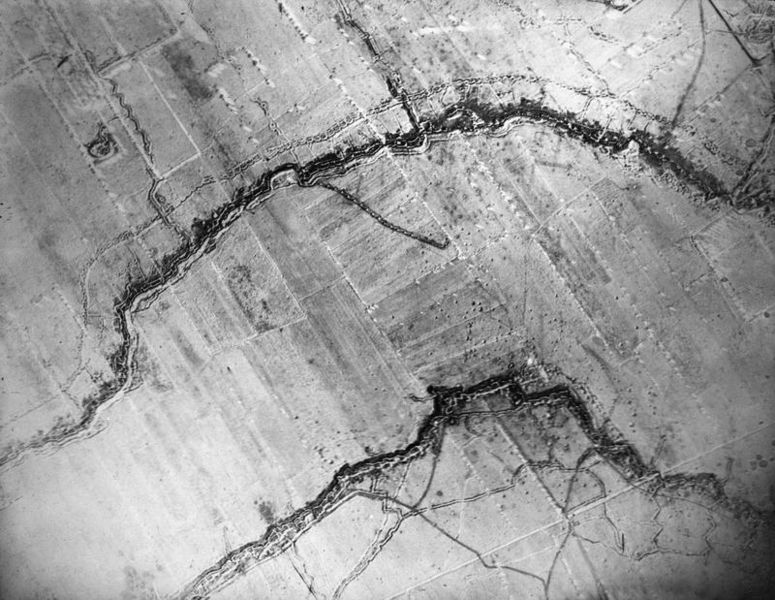
In The Great War and Modern Memory (1975), Paul Fussell calculates that the trenches on the Western Front in World War I totaled about 25,000 miles, “equal to a trench sufficient to circle the earth.”
Stanley Casson wrote in 1935, “I used to wonder how long it would take for me to walk from the beaches of the North Sea to that curious end of all fighting against the Swiss boundary; to try to guess what each end looked like; to imagine what would happen if I passed a verbal message, in the manner of the parlor game, along to the next man on my right to be delivered to the end man of all up against the Alps. Would anything intelligible at all emerge?”
In fact in early June 1916 Alexander Aitken had heard the Germans celebrating some news, and “a tremendous tin-canning and beating of shell-gongs had begun in the north and run south down their lines to end, without doubt, at Belfort and Mulhausen on the Swiss frontier.” Fussell adds, “Impossible to believe, really, but in this mad setting, somehow plausible.”
